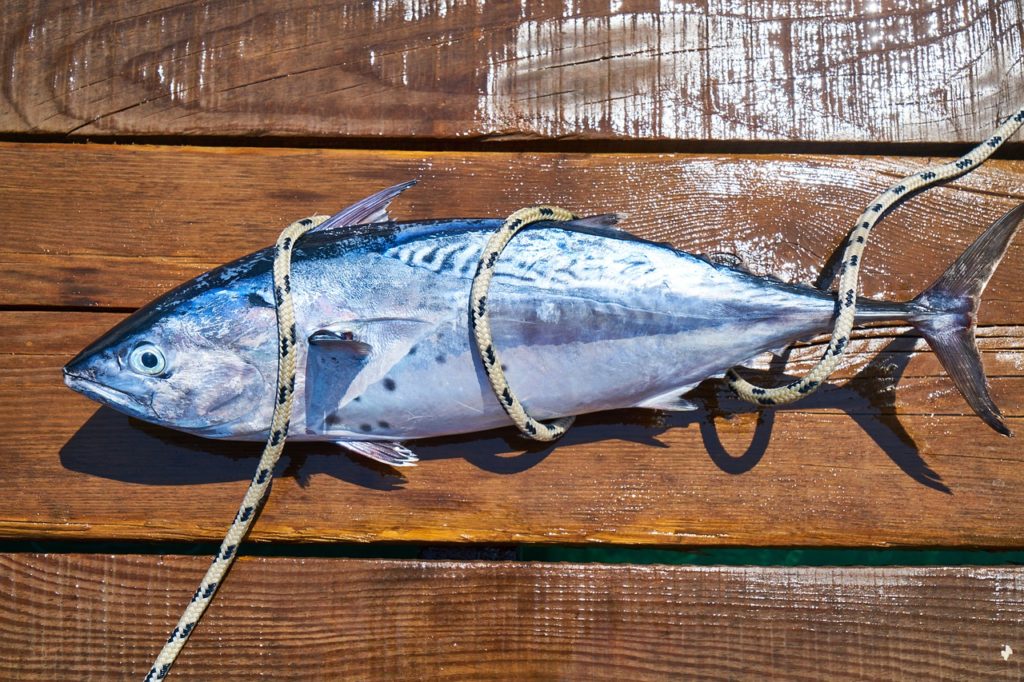By Lindsay Mosher.
Making responsible seafood choices is one of the most important ways that you can contribute to healthier oceans. Thankfully, there is growing consumer demand for seafood that is both ethical and sustainable. An increasing number of people want to ensure they are making responsible decisions when it comes to their seafood choices, and more than 80% of global seafood consumers believe it is important for seafood to be protected for future generations. The challenge is that the path to making sustainable seafood choices is not a clear one.
There are many problems associated with the fishing industry, including overfishing, habitat destruction, bycatch, fish fraud, and even slavery. But most importantly, seafood species are being extracted from the oceans faster than wild populations can replenish. Currently, 93% of wild fish populations are considered fully-fished or overfished. Some fishing methods, like trawling, can also cause enormous collateral damage and irreversible harm to ocean habitats. Bycatch, or catching wildlife that is not the target species, is another serious concern. Bycatch, which is commonly discarded, can include other vast amounts of non-commercial fish species, including sea turtles, sharks, seabirds, and marine mammals like dolphins and seals. Fish fraud is another concern facing seafood consumers. In one study, 21% of seafood that was sampled in U.S. stores and restaurants was mislabeled. For example, an item labeled as sea bass, snapper, or caviar might be something entirely different! Finally, parts of the fishing industry are susceptible to slavery and forced labor. While these impacts are daunting to consider, they underscore the importance of making educated choices when it comes to seafood.
As consumers and ocean lovers, what are the best options? In this guide, we aim to answer some of your top questions about choosing sustainable seafood, and suggest some actionable tips to help you navigate these complex issues. For more suggestions on making good seafood choices, visit the Blue Habits program’s guide to choosing sustainable seafood.
What does ‘sustainable seafood’ mean?
Sustainable seafood is seafood that is caught or farmed (also called aquaculture) with minimal environmental and social impacts. When done correctly, sustainable seafood sourcing prevents overfishing, minimizes incidental impacts to other ocean wildlife and habitats, identifies and protects essential fish habitats, and takes into account the social and economic impacts on the communities from which the seafood is sourced.
How do I know if my seafood is sustainable?
The first step is to identify the source. Choosing what to eat depends on many factors, including how and where the seafood was caught. Some restaurants, markets, and seafood companies have made sustainability part of their operations and will advertise where their seafood is from and whether it has any sustainability certifications, but many places do not. Even if it makes you uncomfortable or seems like an inconvenience, it is critical that you ask questions about where your seafood comes from. Asking questions tells the restaurant or store that their customers care about how their seafood is sourced. If the waiter, grocer, or company doesn’t know their supply chain, the safest option is to avoid purchasing seafood there. Ideally, your questions will spark a bigger conversation and help push them in the direction of understanding where their products come from.
READ MORE at oceanicsociety.org

